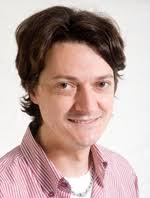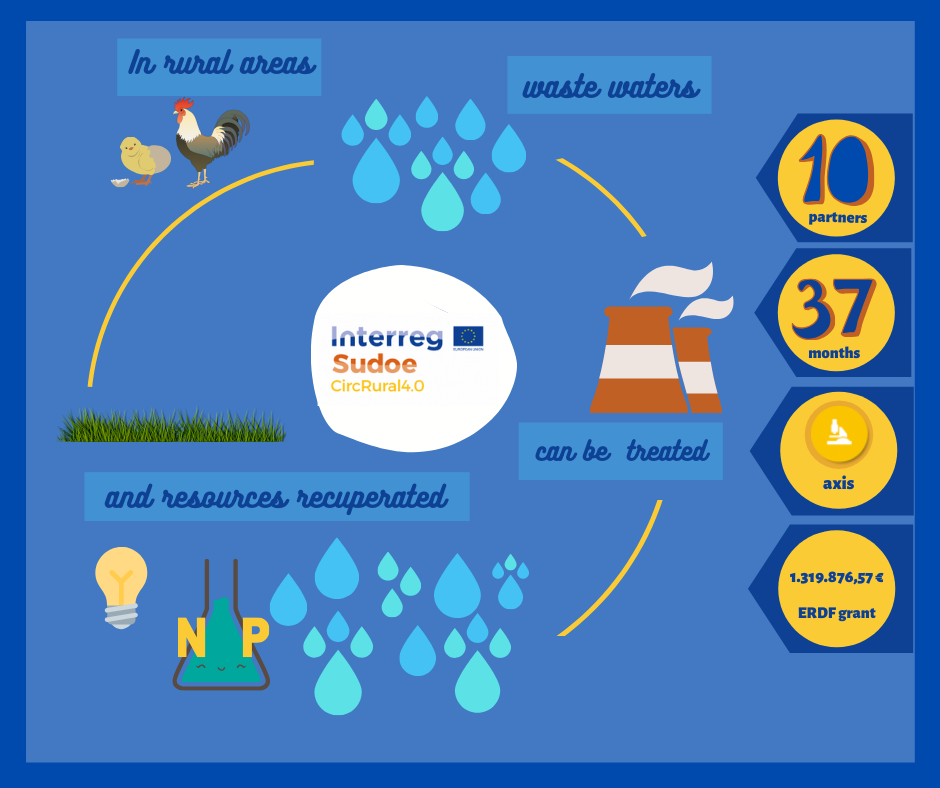Communication
Sudoe News
30 years of Interreg: "Rural wastewater is a resource that we can transform into fertilizer and energy" Interview with Ion Irizar from CEIT.
Categoría General
This year Interreg celebrates its thirtieth birthday, focusing on three thematic of interest for the European cohesion: youth, a greener Europe and we all have neighbors. In this context, each month, we will interview one of our emblematic projects related to one of these thematic.
This month, we chatted with Ion Irizar, scientific researcher and coordinator of CIRCRURAL4.0, a project for the conversion of wastewater treatment plants in rural areas.

Ion Irizar
- What is CIRCRURAL 4.0 about?
CIRCRURAL 4.0 is a project focused on the treatment of wastewater in rural areas. In cities, large treatment plants are already beginning to apply circular economy concepts. These seek the recovery of nutrients such as nitrogen and phosphorous from wastewater and the optimization of energy consumption derived from treatment. The objective of CIRCRURAL 4.0 is to develop an economically viable solution that allows the same concepts to be implemented within the rural environment where purification takes place in a very fragmented way in relatively small facilities.
- What differences exist between urban and rural waters?
In general, there are no major differences since in both cases we are dealing with waters of a primarily domestic nature. The only difference could be in the nature of the industrial discharges that discharge directly to the sanitation network. In theory, smaller treatment plants are more sensitive to potentially hazardous industrial waste; however, any problem in a large treatment plant has a much greater impact and the discharge of industrial discharges must be very controlled.
- Why focus on the rural environment?
We have focused on the rural environment, above all due to the existing technological gap with regard to purification in the urban environment. Although the percentage of treatment plants above 50,000 equivalent inhabitants is small, the volume of wastewater they treat and the energy they consume is above 80% of the total. For this reason, investments in new technologies in this sector prioritize, above all, larger facilities. At CircRural 4.0 we want to bridge this gap by proposing innovative, low-cost and effective technological solutions for small water treatment plants, which are predominant in rural areas.
- Which is the added value of the project?
CIRCRURAL 4.0 tries to reduce the costs of purifying wastewater in rural areas, changing its current management model. Many rural areas have agri-food industries that generate organic waste. These, if well managed, can be converted to biogas and produce electrical energy or biofuel. Until now, current management models have not taken into account the new requirements in terms of energy efficiency, circular economy, use of resources, etc. and with CIRCRURAL we want to answer these questions.
- Were there any difficulties?
Our project has a very large practical component. For example, we are addressing the issue of the energy efficiency of the treatment plant directly applying intelligent control algorithms to real treatment plants, without previously going through pilot plant studies. Acting directly on the actual plant has its difficulties because the management of project activities must guarantee the operation of the plant anytime. Integrating and validating is not so easy in a real installation since you have very little margin for error and you must act conservatively.
Another difficulty we found is related to the search for innovative low-cost solutions. While advanced and expensive instruments are used in large treatment plants, here we use low-cost equipment. Finally, also the pilot plant that we built to produce biogas and recover nitrogen and phosphorous, has its complexities. Handling dehydrated sludge with small-scale equipment is quite problematic and, quite often, results in setbacks that involve stopping experimentation and making modifications to the initial design.
- How can this work be developed in the future?
At CircRural 4.0 we offer three great products. The first is an intelligent control product, installed in the treatment plant. I see it possible to develop because it can be installed in most treatment plants. It is not an expensive product and can be profitable in a short period of time. In addition, its replication in other treatment plants is quite immediate.
The second product is a data analysis software for the different treatment plants. We want to centralize this data and identify the problems of the treatment plants. A product that I also see feasible to replicate in different rural areas.
On the other hand, we have set out to create an optimization tool that helps decision-making and to make recommendations on where to locate the actual anaerobic digestion and N and P recovery facilities, all based on a series of data such as the location of treatment plants and industries, the differences between agrifood waste, etc. With this tool we want those responsible for environmental policies and rural planning to have solid and objective advices to invest in the construction of this type of facility.
- What can citizens do to improve water recycling and contribute to energy efficiency?
Even if often we forget it, citizens are strongly linked to the costs of purifying wastewater. Citizens must be aware that generating less waste water results not only in a better environment but also in less expenses. The energy consumption of a treatment plant depends on the volume of waste generated. If we as citizens are able to generate less waste water, we will help the treatment plant to need less electricity to treat this waste.




